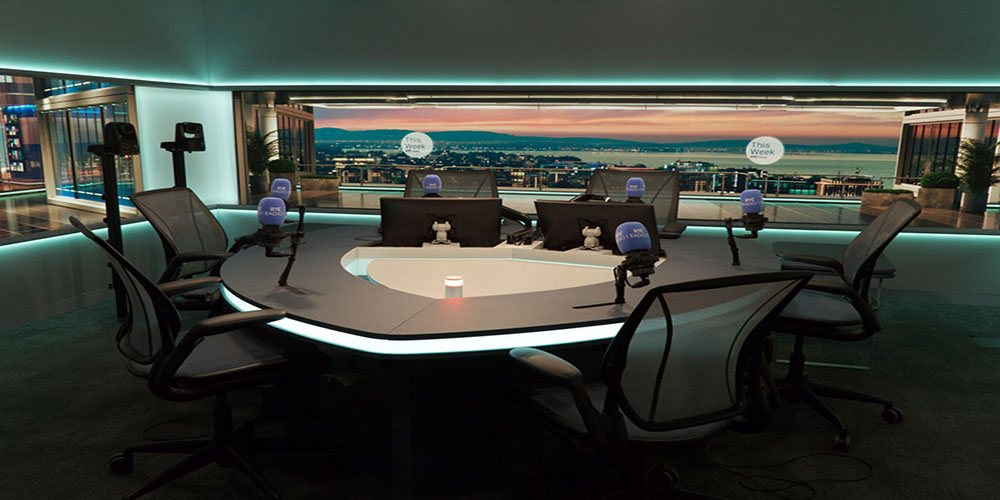Creative Technology’s Systems Integration Division (CT SI) in Ireland was asked to help build the two new radio studios for Irish national broadcaster RTE’s radio division. The project involved adding more sophisticated video capabilities.
These “visual radio” rooms create a new and more engaging experience for listeners/viewers. The new video capabilities have allowed RTÉ to create more content for use across their social media channels, online and on TV.
The team installed 8 4K Panasonic PTZ cameras, a software-based VMix vision mixer, a bionic director automation system from broadcast bionics, and a 12m long LED video wall, made from a 1.5mm Absen LED screen, controlled from a Nova star H5 video splicer. The LED wall runs around three sides of the studio providing an immersive visual experience to the radio programs.
The new microphone system is voice-activated and is tied to the vision mixer so that when one person in the room talks, the camera dedicated to that person is displayed. There are two mac minis in the studio which allows for guests to join via FaceTime, Zoom, Teams and Skype. “The important thing with these rooms is that RTÉ wanted the talent to focus on creating the show, so the technology had to be relatively hidden and easy to use,” said Roland de Groot, Director, Systems Integration at CT SI. “That’s why automating the vision mixer from the audio levels was important. This was complex technology, but via common user interfaces, it became very simple to use.”
The end goal was for each radio program to look fresh, airy, and light, the complete opposite to the traditional ‘underground’ feel of most radio studios. The new studios are now a much nicer and more comfortable place to work. RTÉ’s CTO Richard Waghorn spoke on the benefits of the new installation: “Ultimately, we want to become more virtual production based,” “It helps with the storytelling and it helps the attractiveness of what you’re looking at. It’s also good from a sustainability point of view because we’re not building physical sets all the time. It’s helped us to simplify our turnaround between productions. We can get the show up and running quicker and with ultimately less resources. So, it’s also enabling us to be more efficient. And I think the radio studios can start to play that efficiency in and unlock those spaces to do other things over time.”


